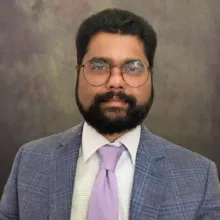Using SensorFabric in CyVerse to Make Data Easier to Analyze

When
Pacific Daylight Time (Arizona time)
Webinar Video-recording
Presentation Slides (attached below)
About the webinar
As wearable sensors become increasingly capable of collecting high frequency data, the task to manage those incoming streams and structure it in a way that can be queried efficiently becomes paramount for analyzing the data. In this webinar, Shravan Aras of the UArizona's Center for Biomedical Informatics & Biostatistics will cover high frequency sensorkit data coming from Applewatch devices which contains upto 100Hz of accelerometer data and rotational data, amounting to millions of data points per day. We will look at how the raw JSON data is flattened in a structured manner, and stored in Cyverse Data Store (duckdb) to make it readable through our SensorFabric library running from within Cyverse. If you are thinking of incorporating high frequency wearable sensor data into your research, or already have such a study underway, then please join us!
What you'll learn
- how to flatten wearables data so it can be more efficiently queried and analyzed
- how to find and access the SensorFabric library in CyVerse
- best practices for managing your wearables data
About the presenter

Shravan Aras, Assistant Director, Sensor Analysis & Smart Health Platforms, helps integrate wearable sensor technology and smart health platforms such as IoT devices into various clinical studies run across UArizona Health Sciences centers. He graduated from the Department of Computer Science at University of Arizona in 2018. Dr. Aras' research areas span across energy optimization for sensors, clinical imaging using machine learning techniques, graded authentication based on biometrics and biomedical algorithms for cardiovascular systems. He is also instrumental in pushing the Low Code - No Code initiative, giving clinicians and non-technical personnel the tools to develop sensor-based applications for distributed clinical data collection. His motto: reduce the initial inertia for adopting sensor based mobile technologies in distributed at-home clinical studies to give physicians, residents, and researchers the tools they need to focus on their goals rather than the underlying computational technology.

